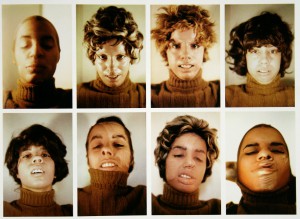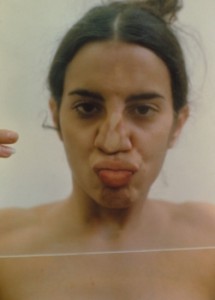Mendieta’s artwork covers a wide range of art movements that grew out of the 1960’s and 70’s. Her transition from painting to performance art was marked by her interest in expressing social and political issues. The use of the term “performance” is broad however because within that category of artistic expression she incorporated elements of process, conceptual, body, and land art. Among the many themes she embodied, feminism was a significant influence to her unconventional meshing of artforms.
The second-wave of feminism hit the United States in the 1960’s, coinciding with her exile from Cuba and her transformative education at the University of Iowa. Feminist political movements tackled such issues as violence against women and lack of female presence outside of the domestic sphere. Female artists translated these relevant themes in their artwork. Hannah Wilke and Marina Abramović, like Mendieta, used their bodies in intense ways to question human morality and deconstruct stereotypes of feminine beauty. Mendieta was concerned about the pervasive “essentialist” feminist ideology of the time because it created static and unequal portrayals of women generally, but specifically in art. Feminism during this time did not properly represent the multitude of identities and culturally informed decisions by artists whose gender assignment was secondary to their original artistic intentions. Thus, she confronted these issues by creating associations between the female form and nature, suggesting that being a woman is complicated and transcends biological essentialism.

Untitled (Facial Cosmetic Variations), 1972
By using wigs, makeup, and sheer nylon pantyhose, Mendieta alters the physical appearance of her face. She questions conventional notions of feminine beauty by transforming her face in various, subtle ways.

Untitled (Facial Hair Transplant), 1972
The transplanting of hair took place as a performance and photo series. Mendieta’s colleague Morty Sklar cut off sections of his beard, then Mendieta took the hair and glued it to her face. It was an effort to question gender constructions and stereotypes of what looks are inherently male or female.

Untitled (Glass on Body Imprints), 1972
Another extensive series was Glass on Body Imprints in which Mendieta took a glass pane and moved it all over her body. In this example, she is distorting her face and in turn feminine beauty. In other photos from the series, she placed it on her breasts and stomach, changing her own female form from conventional to grotesque or unnatural.